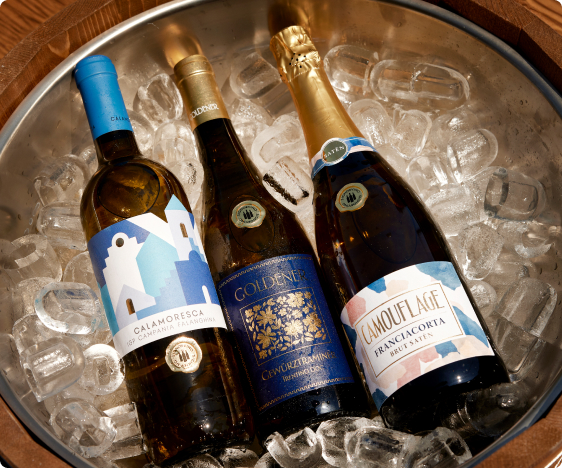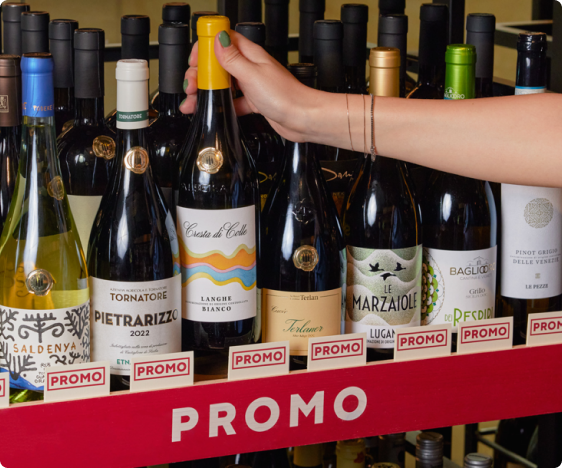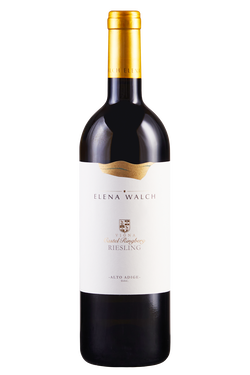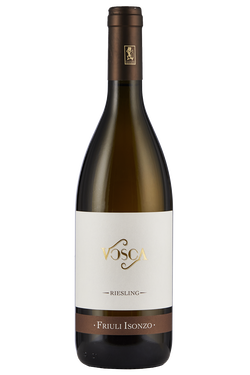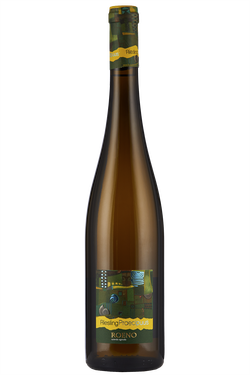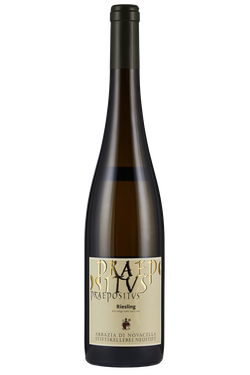- Wines >
- White wines >
- Riesling
Riesling: organoleptic characteristics
Riesling is a white grape variety that produces aromatic and complex wines with a wide range of organoleptic characteristics. Riesling wines can vary from straw yellow to the more intense golden, sometimes with greenish reflections, depending on age and wine making style. It is renowned for its distinctive aromatic bouquet that includes notes of white flowers, such as jasmine, orange blossom and peach blossom, along with fresh fruit such as peach, green apple, apricot and lemon. Some Rieslings, especially those of high quality from prestigious areas such as Germany, can age beautifully, developing an even greater aromatic complexity over the years. In summary, Riesling is celebrated for its aromatic complexity, the balance between sweetness and acidity, and its ability to express unique terroirs. This vine offers a wide range of scents and flavors ranging from fresh and fruity to complex and mineral, making it a fascinating and versatile choice for wine lovers.
Rhine and Italic Riesling: main differences
Riesling is a grape variety that is expressed in several wine regions, including Germany for Rhine Riesling and Italy for Italian Riesling (also known as Welschriesling). The main differences between the two include geographical origin, diffusion, organoleptic characteristics and production styles. Rhine Riesling has its roots in Germany, especially in the regions of Moselle, Rhine and Hesse. It is widely spread in these areas and is considered one of the most important and prestigious vines in the country. On the other hand, the Italian Riesling, although the name may be misleading, is not strictly related to the German Riesling. Italian Riesling is mainly present in Italy, in particular in the northern regions such as Friuli-Venezia Giulia and Lombardy. Although both have the name "Riesling", organoleptic profiles can differ significantly. German Rhine Riesling is known for its aromatic complexity, with floral, fruity and mineral notes. It offers a range of styles, from dry to sweet, and is renowned for its aging capacity. Italian Riesling, on the other hand, is lighter and tends to produce wines less complex and less aromatic than Rhine Riesling. Wines derived from Italian Riesling can have a fresher and less structured profile. Rhine Riesling often finds its best expression in cooler climates and soils characterized by shale, slates and soils rich in minerals. Italian Riesling adapts to different climatic conditions and is cultivated in a variety of soils, even if generally it does not reach the same notoriety and complexity as Rhine Riesling. In short, while both share the same name, Rhine Riesling and Italian Riesling are different varieties with different organoleptic characteristics, territories of origin and distinct production styles. German Rhine Riesling is generally more celebrated for its complexity and its aging potential than Italian Italian Riesling.
South Tyrol DOC and other appellations
Riesling is also cultivated in Alto Adige DOC, one of the northernmost regions of Italy, located in the province of Bolzano. The Alto Adige DOC appellation produces a variety of white and red wines, including Riesling, which here can express unique characteristics influenced by the Alpine terroir. Some other Italian wine denominations that produce Riesling or similar vines include Trentino DOC, Friuli-Venezia Giulia, Alsace. Adjacent to South Tyrol, the Trentino region also produces Riesling wines, often characterized by freshness, lively acidity and fruity and floral notes. This region is famous for the production of high quality white wines, including varieties of Riesling such as Rhine Riesling or Welschriesling, frequently found in blend or as monovarietal wines. Riesling is also present in Mosel, Rheingau and other German wine regions: although they are not Italian appellations, German wine regions produce some of the most renowned Rieslings in the world. Rieslings from Mosel, Rheingau and other regions of Germany are renowned for their complexity, freshness and aging capacity. Although located in France, Alsace produces Riesling of excellent quality. These wines are known for their fruity, floral and minerality style, as well as their ability to express terroir. In general, Riesling from Alto Adige DOC is distinguished by its unique aromatic profile that reflects the alpine climate and the characteristics of the soil. However, Riesling is cultivated in several other regions, both Italian and international, each with its own contribution to the wine scene of this variety, offering a diverse range of sensory experiences for wine lovers.
Riesling: the best table combinations
Riesling is a versatile and aromatic white wine that goes well with a wide range of dishes thanks to its lively acidity and aromatic complexity. Riesling combines beautifully with Asian cuisine, such as Thai, Chinese or Japanese. It goes well with spicy dishes, curried dressings, sushi, coconut dishes or shrimps. The natural sweetness and acidity of Riesling are well opposed to spicy dishes. Try pairing it with Indian or Mexican dishes to balance the heat and intensify the flavors. Riesling pairs beautifully with fish and seafood dishes. To emphasize the combination with sushi, fish soups, grilled fish or salmon dishes. Given its versatility, Riesling is also suitable for fusion or exotic dishes that combine different ingredients, allowing you to experiment with bold and creative combinations. In summary, Riesling is a wine that offers many possibilities of matching at the table, from Asian to European cuisine, from light dishes to more intense flavors. Its acidity and aromatic-tasty complexity make it a suitable choice for various culinary occasions.
